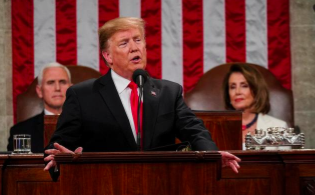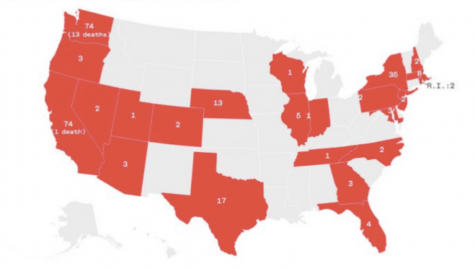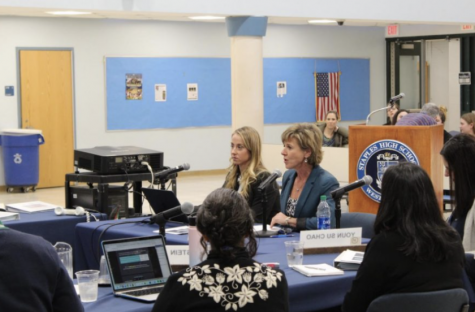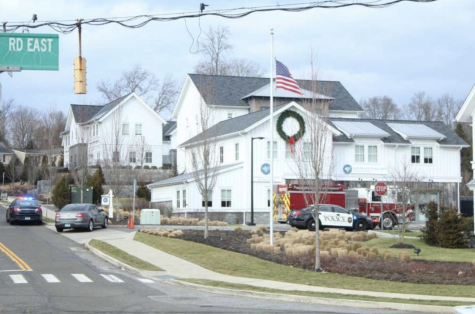Trump delivers State of the Union address

President Donald Trump delivered his annual State of the Union address on Feb. 5. He presented his ideas about about national security, women’s reproductive rights, foreign relations and bridging the gap between parties.
Trump began his speech without allowing Speaker of the House Nancy Pelosi to formally introduce him, which is customary when the president speaks in front of a joint session of Congress.
He started off by discussing bipartisanship and said that the government must govern as one nation rather than by the two parties.
“The agenda I will lay out this evening is not a Republican agenda or a Democrat agenda. It is the agenda of the American people,” Trump said.
Social studies teacher Robert Shamberg commented on the structure of Trump’s speech and bipartisanship message.
“[The speech] was well crafted in that the president is supposed to call for the unity of the state in his speech,” Shamberg said. “He knew he was getting his greatest audience in the beginning, and it was cleverly constructed by his speech writer so that most of the American people were listening.”
Trump mentioned his tax cuts, the elimination of the Affordable Care Act’s individual mandate and the estate tax cut he made.
About 20 minutes into his speech, Trump declared that the “state of our union is strong.” Some Republicans in the chamber repeatedly chanted “USA” while Democrats, many wearing white from head-to-toe to honor the suffragettes, stayed still.
Trump also commented on the investigations into his administration. He noted that in order to be a united country, the House must “avoid ridiculous partisan investigations.” He continued to say, “If there is going to be peace and legislation, there cannot be war and investigation.”
Trump also brought up abortion, referring to the Democrats in New York and Virginia who have worked on loosening restrictions on abortions. He discussed making a federal law to prohibit late term abortion, which was followed by a round of applause by many of the conservatives in the room.
As he has done in many of his speeches, Trump brought up his plea for 6 billion dollars in government funding for his Mexican border wall and declared it a national crisis.
“Where walls go up, illegal crossings go way way down,” Trump said.
In effort to bridge to gap between parties, Trump expressed support for causes supported by Democrats. These included new funding to eradicate AIDS, reducing childhood cancers and a promise to work on our “crumbling infrastructure.”
Trump also pleased the Democrats by mentioning that there are more women in Congress than ever before. He also noted that 58 percent of jobs were filled by women last year.
Trump claimed that if he had not been elected, the United States would currently be in a war with North Korea, citing his relationship with Kim Jong-Un “a good one.” He informed the country that he will meet with him on Feb. 27 and 28 in Vietnam.
Trump ended his speech similarly to how he began, with an attempt to unify the country. He said that the country must “rekindle loyalty and the love that links us together as patriots.”
Students in government the classes at Staples were assigned to watch the speech for homework.
“It was really interesting to see what Trump addressed and how he claims he will go about those certain issues,” Jackie Zinn ’20, an AP Government student, said.
Following his speech, Stacey Abrams, the former Democratic gubernatorial nominee from Georgia delivered the Democratic response. Her speech highlighted specific issues important to her platform, such as gun safety, taxes and education. Additionally, she talked about her new nonprofit organization called Fairfight which fights against voter suppression. She finished by emphasizing that she doesn’t want Trump to fail. However, she wants him to tell the truth and be there for Americans.
“America wins by us fighting for shared values,” Abrams said.
Photo from AP.

Beginning as a staff writer her sophomore year, Layla Wofsy ‘19 knew that she wanted to be a part of the Inklings community. As an Opinions Editor as...


























































